Soft Drinks in China: How to Market A Soda Brand to Chinese Consumers?
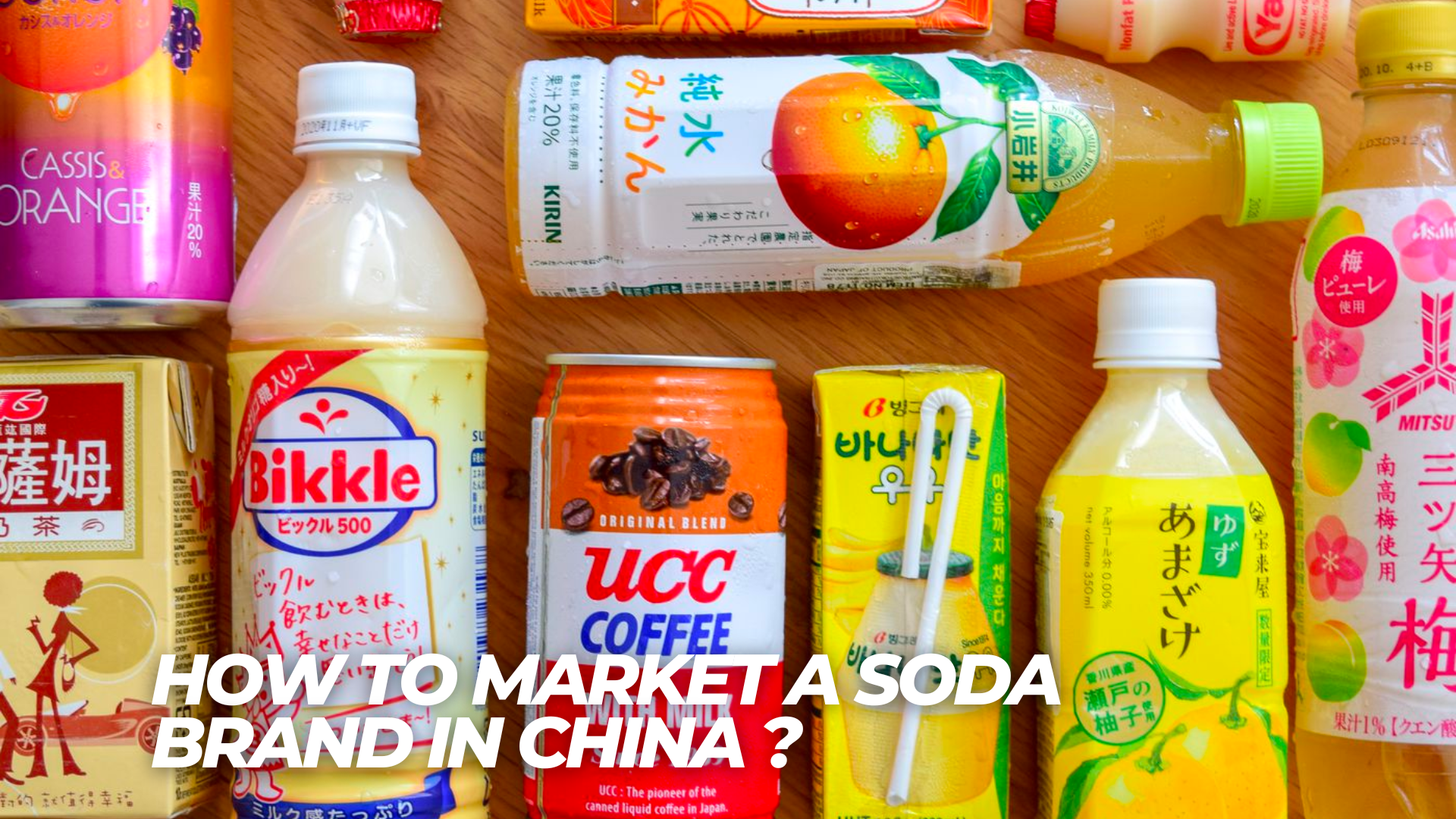
The soda market in China is experiencing significant growth due to the increasing wealth of the Chinese population and their growing consumption of Western products. Despite China being known for its tea culture, the demand for soda is rapidly rising, potentially making it one of the largest industries in the country in the future.
China’s entry into the World Trade Organization in 2001 has made it easier for international soda brands to access the Chinese market. Coca-Cola is a prime example of success in this market, as the brand entered China in the 1920s and continues to maintain its leadership position in the country’s soft drink market.
Cost-Effective Agency
KPI and Results focused. We are the most visible Marketing Agency for China. Not because of huge spending but because of our SMART Strategies. Let us help you with: E-Commerce, Search Engine Optimization, Advertising, Weibo, WeChat, WeChat Store & PR.
However, there is still room for new brands to challenge the dominance of established players in the market.
China’s Soft Drink Market Overview
The soda market in China is experiencing significant growth and has a substantial market size. With a population of over 1.4 billion people, China offers a vast consumer base for soda companies to target. The rising disposable income levels and changing lifestyles of Chinese consumers have contributed to the increased demand for soda products.

In recent years, the soda market in China has witnessed a shift in consumer preferences. Traditionally, carbonated soft drinks, and fizzy drinks have been popular, but there is now a growing demand for healthier alternatives such as low-sugar or sugar-free options, flavored water, yogurt drinks, unflavored mineral water, infusing water, and functional beverages. This shift towards healthier choices has opened up new opportunities for both local and international soda brands.
The market size for soda in China is expected to continue expanding due to various factors. The increasing urbanization and modernization of cities have led to a rise in convenience stores, supermarkets, and online retail platforms, providing easy access to soda products.

Additionally, the growing popularity of social gatherings, parties, and celebrations has also contributed to the increased consumption of soda.
Furthermore, the influence of Western culture and the adoption of Western eating habits have played a significant role in the growth of the soda market in China. The younger generation, in particular, is more open to trying new flavors and brands, leading to a diversification of the market.
Overall, the soda market in China is thriving, driven by a large consumer base, changing preferences, and increased availability of soda products. The market size is expected to continue expanding as companies adapt to evolving consumer demands and preferences.

Data on the soft drink market in China
- According to a survey, Sprite, Pepsi, and Coca-Cola are the most popular soda.
- Revenue in the Soft Drinks segment amounts to US$41.48 billion in 2023.
- China has one of the biggest bottled water markets in the world, and it is expected to reach USD 76.2 billion by the year 2027, growing at a CAGR of 7.6% in the forecast period.
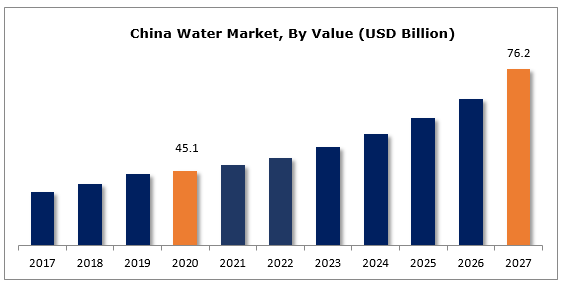
- In April 2023, approximately 14.55 million metric tons of soft drinks were produced in China, indicating a five percent increase compared to the same period of the previous year.
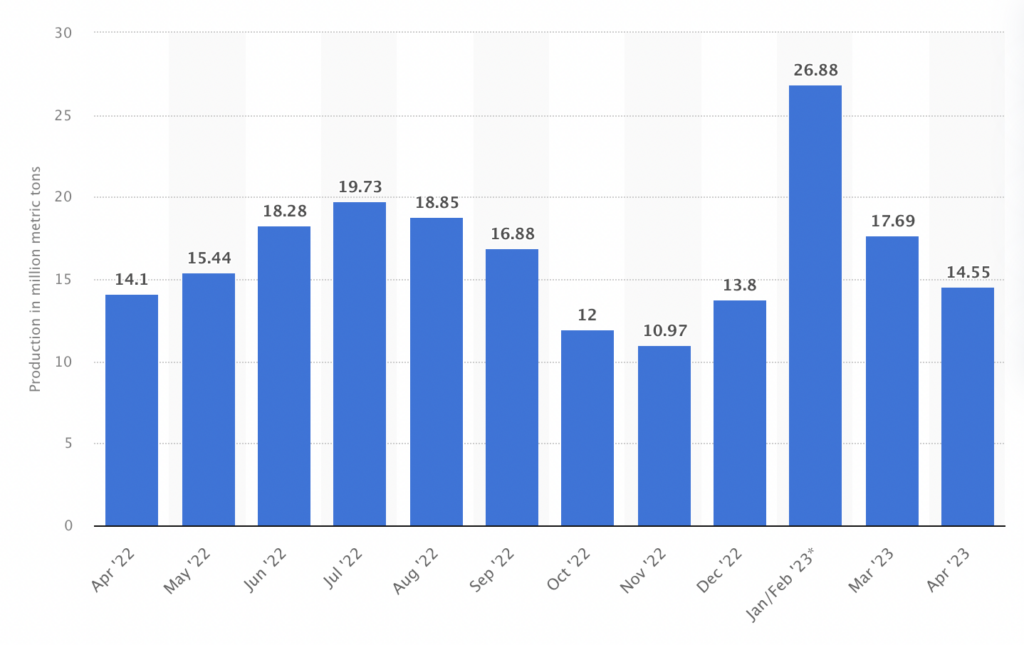
The market of soda in China: a developing trend
Over the past decades, China’s industrialization and urbanization have been in the process of converting a large population to urban dwellers. Due to that, increased regulations economic growth has continued to soar and develop into a market-based economy.
The rising income and disposable income levels, and a constant improvement of living standards of Chinese people have resulted in modernized, busier lifestyles, which is one of the primary drivers of consumption of soft drinks the increase in demand. The large soft drink market in China also has one of the highest growth rates in the world.
In the past few years, retail sales in the Chinese market for soda increased at a rate of 20% every year. This market is divided into two categories: the household market and the catering market. In order to launch your soda brand in China, you first must define which part of the market you want to develop.

There are many opportunities to launch a soda pop brand in China. Indeed, domestic brands have taken pace in development and have gained some consumer taste and good fame, the needs of consumers are diversified ensuring the expand the potential of the market, and customers are more and more segmented giving companies more chances to realize an effective target marketing.
Moreover, the market’s occupation rate of beverages in the different geographical regions of China is not equal, which gives your company more opportunities to develop your brand across the country.
However, you also have to avoid weaknesses and pay attention to some risks. Indeed, there are too many different sugary beverage brands on the Chinese market, your brand needs to have something special to be differentiated from other soft drinks.
Moreover, the life circle of a soft drink is shortened, and the tastes of consumers are changing quickly. Besides, the most important brands have now a monopoly in the soft drink market.
Which soft drinks are preferred in China?
During the first ten years of the 2000s, sodas were among the drunkest soft drinks in China. People were buying Coca-Cola in bulk, as it was the trendiest drink on the market. But nowadays, carbonated beverages take only 14% of the market share, with bottled water, ready-to-drink bottled tea, and fruit drinks taking 71% of the market.

The beverage industry is changing all around the world and China is no different. There are more and more people choosing to buy fruit juice instead of coca cola or energy drinks, they are also turning to mineral waters, or functional and sports drinks for health benefits.
Tea and Iced-Coffee
The tea market in China is vast and competitive, with the dominance of local brands. Tea is the most traditional beverage in Chinese culture, and the variety of choices for tea beverages is bigger than anywhere else in the world.
According to Daxue Consulting, in recent years the new-style tea beverages are entering the market, with HEYTEA and Naixue Cha gaining the most recognition. There are many different options to chose from, starting from traditional tea flavors, through milk tea and tea beverages with fruit juice. Instant tea occupies 21% of the market shares.
Although coffee culture is a domain of the West, coffee market in China is presenting a huge potential, with many people choosing this beverage among tea. Giants like Starbucks and Costa Coffee are very popular in China’s coffee market, in fact, the biggest amount of Starbucks is located in Mainland China.
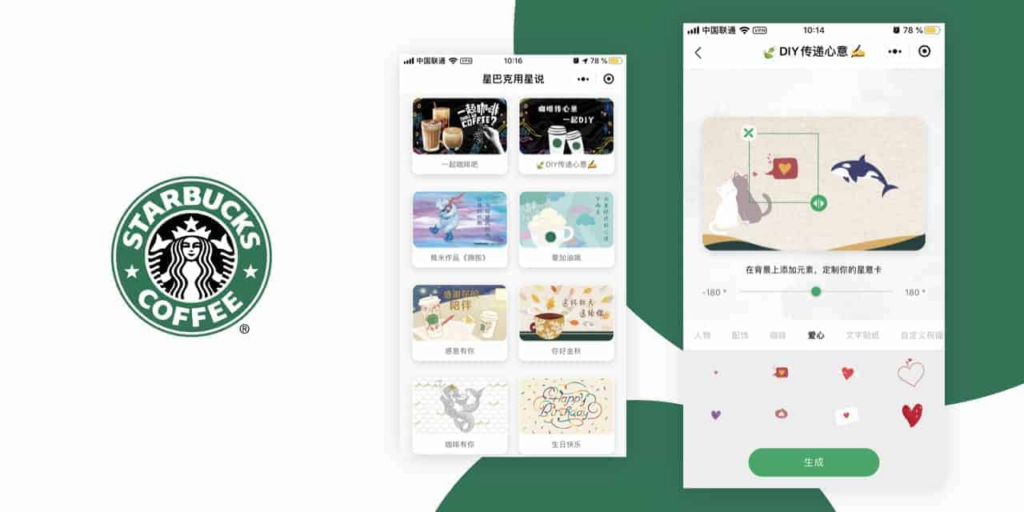
Following the recent consumption trends, coffee companies are starting offering zero-sugar coffees, just like in other countries. Now there are many options for ready-to-go iced coffees in glass bottles sold in convenience stores and grocery shops across China.
Juice
Juice market occupies 18% of the soft drink market shares in China, with orange juice being the most favored taste among Chinese customers. Tongyi, Kangfu Shifu, Nongfu Spring, and Huiyuan are four local brands with the biggest market shares in the juice market. Today more consumers buy fresh fruit juices and juice drinks instead of carbonated water, as they are pursuing healthier and more functional drink options.
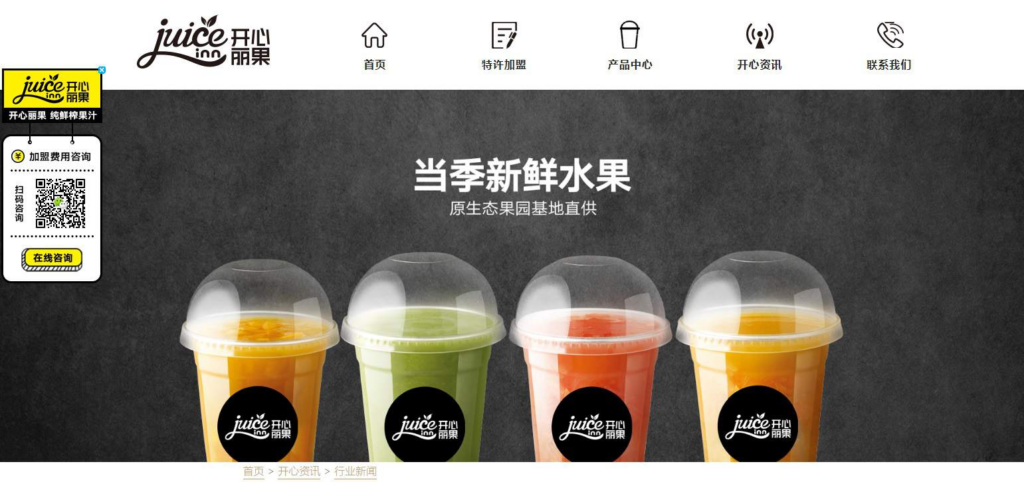
Mineral water and nutridrinks
China has a thriving water market, which is expected to continue growing due to changing consumer behavior. The market is dominated by domestic brands such as Wahaha, Kang Shifu, and Nongfu Spring. While warm water is traditionally preferred in China, there is a rising number of young consumers who are opting for mineral bottled water and flavored waters.
With an increasing focus on health and fitness, bottled water and nutridrinks are becoming more popular in the soft drink market.
In response to industry trends, major companies like Coca-Cola China, Nongfu Spring, Wahaha, and Pepsi are introducing mineral bottled water and other beverages that are sugar-free, calorie-free, and packed with nutrients for Chinese consumers.
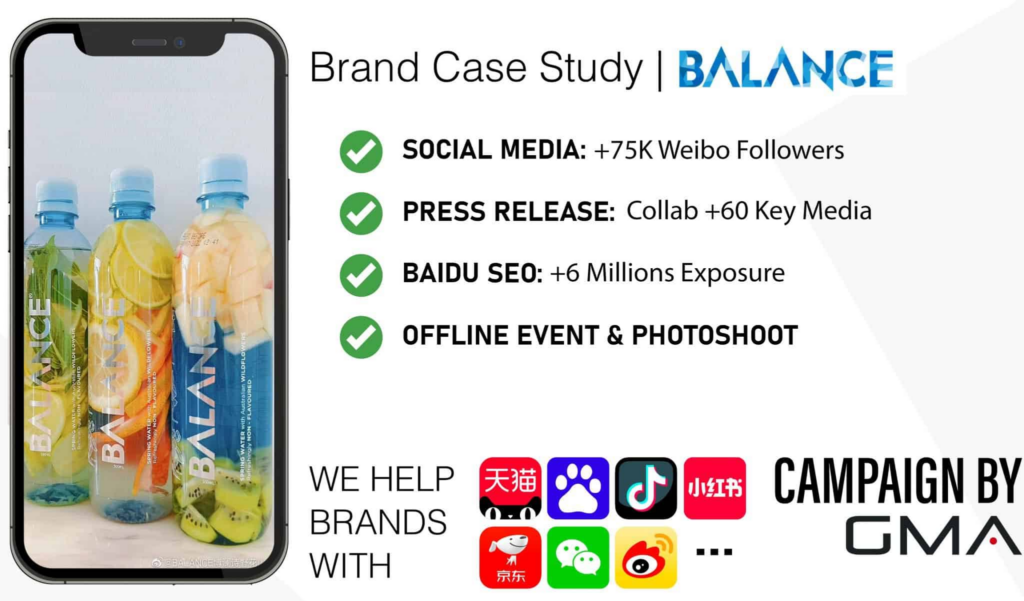
GMA successfully worked with Balance, an Australian water brand, to promote the health benefits of local flora. Through our efforts, we were able to increase the brand’s followers on WeChat by 8000 and on Weibo by 75000. Balance gained significant recognition in China and participated in various online and offline events.
This success showcased the opportunities for foreign soft drink companies in the Chinese market. If you are interested in working with us, please leave a comment.
How to promote a soda brand in the Chinese market?
The main foreign soda companies in China are Coca-Cola, Pepsi, and Cadbury; they bring competition for local brands. Even if Chinese soft drinks have some advantages and market power, foreign brands have more acceptance. Chinese soft drink brands generally do not have their own brand culture, so you indeed have a high chance of success there.
Adapt to Chinese habits and tastes
Chinese consumers now favor online shopping to buy their soft drinks due to competitive prices and the convenience of home delivery. Therefore, you must adapt your marketing strategy and be present on Chinese websites, such as Taobao.
In order to meet Chinese demand for personalized tastes, many manufacturers launched exotic products with special tastes.
In the future, it is expected that China’s economy will continue to grow, and Chinese residents’ income will continue to increase, promoting the development of the soft drink industry in China.
Local brands invest in their branding in China
Both foreign and domestic brands play a leading role because they share most of the Chinese soft drink market. Wahaha and Huiyuan compete with foreign companies, such as Coca-Cola, PepsiCo, or Red Bull. These foreign brands and producers are well-established in the country.
For example, PepsiCo has 8 farms and 6 plants, and it continues investing in Research and Development to suit its Chinese customers.
China’s soft drink industry is in perfect competition because it is not controlled by state-owned capital as in other industries. Market competition is extremely intense, but vast investment opportunities are also embedded.
However, due to the fast increase of the Chinese soft drink market and China’s demand for foreign beverages, foreign producers become dependent on the sales generated in China.
Concerning Chinese soft drink brands, the sales model of different types of beverage companies vary greatly. National beverage manufacturers are capable of distributing products both online and offline because they invest considerably in advertising, promotion, and channel establishment. In comparison, regional beverage manufacturers rely on conventional offline channels to save marketing costs.
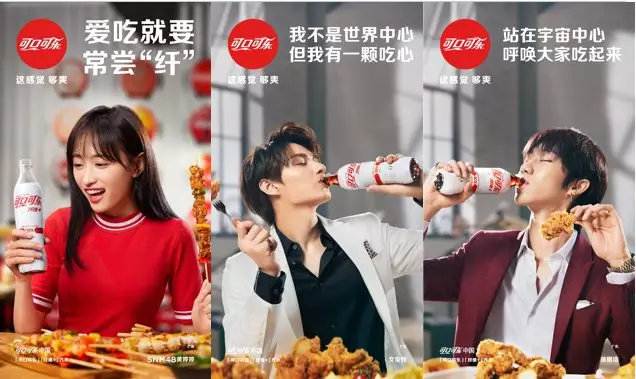
Chinese social media marketing
Western brands like Pepsi, Sprite, and Coca-Cola have all recognized the importance of Chinese social media platforms in order to be successful in China. These companies have actively engaged with Chinese consumers through various social media channels to build brand presence and connect with their target audience.
Pepsi, for example, has leveraged popular Chinese social media platforms such as WeChat and Weibo to promote its products and engage with consumers. They have created interactive campaigns and sponsored events to increase brand visibility and connect with Chinese consumers on a more personal level.
Sprite, on the other hand, has focused on creating engaging and shareable content on platforms like Douyin (also known as TikTok) to appeal to the younger demographic in China. They have collaborated with popular Chinese influencers and celebrities to create viral campaigns and increase brand awareness.
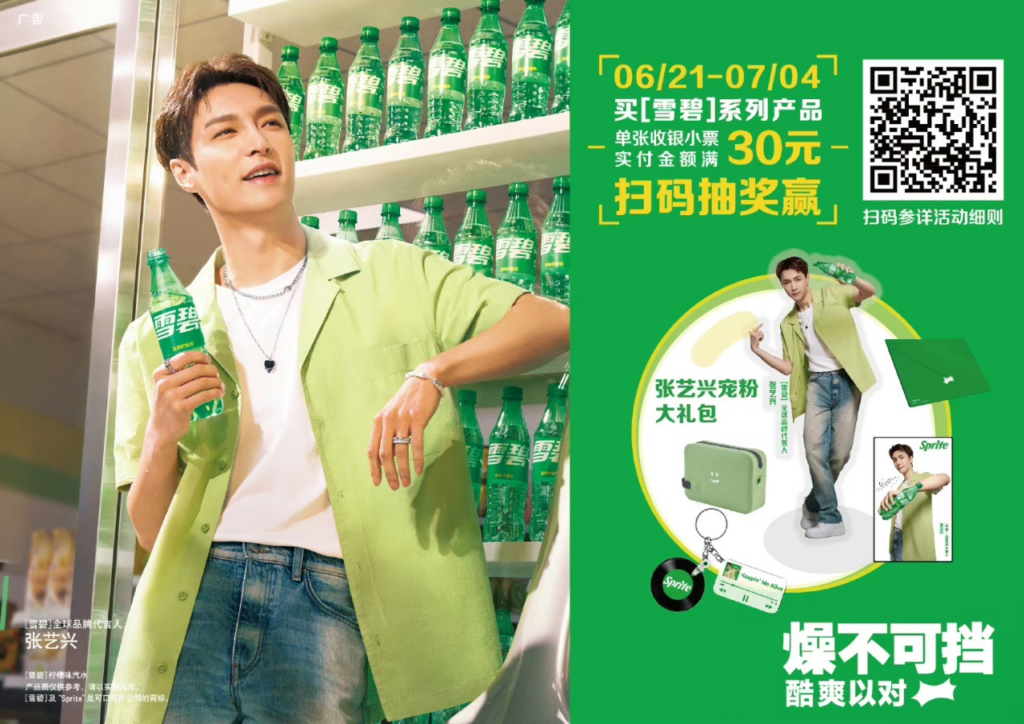
Coca-Cola has also made significant efforts to establish a strong presence on Chinese social media platforms. They have used platforms like Weibo and WeChat to launch creative marketing campaigns, share user-generated content, and interact with their followers. Coca-Cola has also partnered with Chinese e-commerce platforms to promote their products and drive sales.
Overall, these brands have recognized the power of Chinese social media and have tailored their marketing strategies to effectively engage with Chinese consumers. By understanding the preferences and behaviors of their target audience, they have been able to successfully build brand presence and connect with consumers in China.
KOLs (Key Opinion Leaders) and Celebrity endorsements
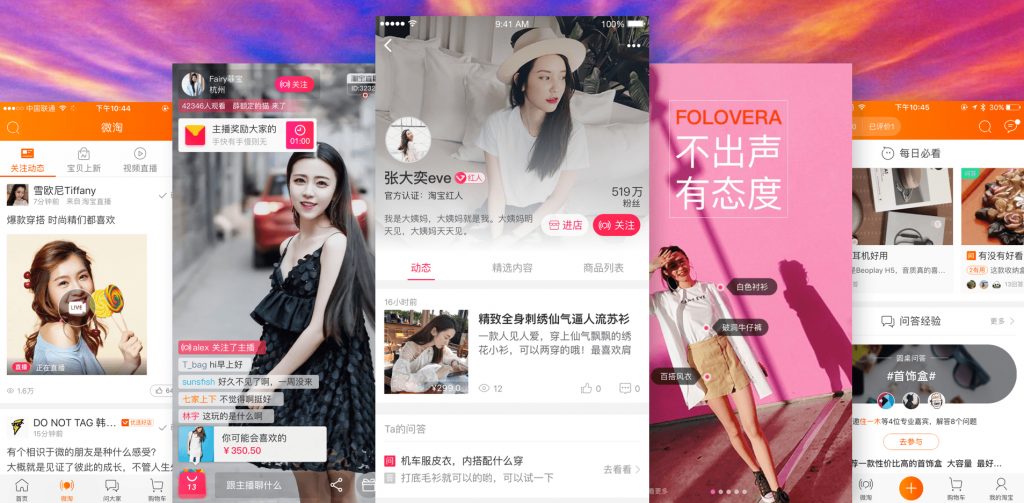
KOLs (Key Opinion Leaders) and celebrity endorsements can indeed play a significant role in promoting a soda brand in China. KOLs are individuals who have a large following and are seen as experts or influencers in a particular field. They often have a strong influence on consumer behavior and can help increase brand visibility and credibility.
In China, KOLs are particularly influential in shaping consumer opinions and driving purchasing decisions. Many Chinese consumers look up to KOLs and trust their recommendations. By partnering with popular KOLs, soda brands can reach a wider audience and gain exposure to potential customers who may not have been aware of the brand otherwise.
Celebrities endorsements are also a popular marketing strategy in China. Chinese celebrities have a massive fan base and often have a significant impact on consumer behavior. When a celebrity endorses a soda brand, it can help create a positive association and increase brand recognition.
For example, Luhan, a popular Chinese singer and actor, has been a brand ambassador for Coca-Cola in China. He has been featured in several Coca-Cola advertisements and campaigns, promoting the brand’s products and values.

One notable campaign was the “Share a Coke” campaign, where Coca-Cola personalized its bottles with people’s names. Luhan was one of the celebrities whose name appeared on the bottles, creating a buzz among his fans and Coca-Cola consumers.
This collaboration between Luhan and Coca-Cola helped to strengthen the brand’s presence in China and connect with the younger audience.
Pepsi Case study
Pepsi entered the Chinese market in 1982. It was one of the first Western companies to establish a presence in China after the country opened up its economy to foreign investment and trade. The brand positioned itself as a refreshing and thirst-quenching drink, targeting young consumers.
Pepsi focused on extensive marketing and advertising campaigns to build brand awareness and appeal to the Chinese audience. They used various channels, including TV commercials, billboards, and social media platforms, to promote their product.
Pepsi adapted its marketing strategies to suit the Chinese culture and preferences. They collaborated with local celebrities and influencers to endorse their brand, which helped in connecting with the target audience.
For example, the popular carbonated soft drink brand, collaborated with Jackson Wang, a well-known Chinese singer, rapper, and dancer, for a marketing campaign in China. The collaboration aimed to promote Pepsi’s brand and connect with the Chinese youth through Jackson Wang’s influence and popularity.

During the campaign, Jackson Wang became the brand ambassador for Pepsi in China. He appeared in various advertisements, commercials, and promotional events, endorsing the refreshing qualities of Pepsi. The collaboration focused on targeting the younger generation, as Jackson Wang is highly admired by Chinese youth for his music and entertainment career.

Through this partnership, Pepsi aimed to increase its brand awareness and engage with its target audience in China. Jackson Wang’s energetic and vibrant personality aligned well withPepsi’s brand image, making the collaboration a strategic move to connect with the Chinese market.
Overall, Pepsi’s success in China can be attributed to its effective marketing strategies, localization efforts, product innovation, and engagement with the target audience through various channels.
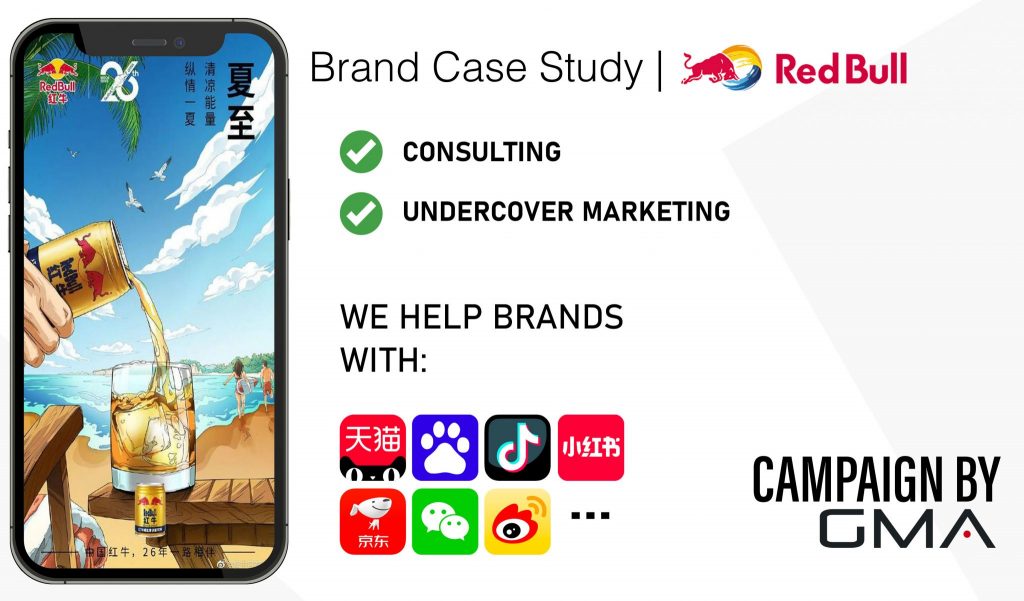
We are your local partner in China! Contact us!
The soda brands market in China is highly competitive and constantly evolving. Numerous domestic and international soda brands are vying for market share in the country. Some of the popular soda brands in China include Coca-Cola, Pepsi, Sprite, and local brands like Wahaha and Jianlibao.
The market for soda brands in China has seen significant growth over the years, driven by factors such as urbanization, increasing disposable income, and changing consumer preferences.
However, there has been a growing concern regarding the health effects of consuming sugary drinks, leading to a shift in consumer behavior towards healthier alternatives.
Overall, the soda brands market in China is dynamic and continuously adapting to consumer demands and preferences.
We are a China-based marketing agency offering cost-effective solutions to foreign brands interested in tapping into the Chinese market. Our team of Chinese and foreign experts has the experience and know-how needed to succeed in this lucrative, yet complicated market.
Gentlemen Marketing Agency offers many digital marketing and e-commerce solutions, such as web design, e-commerce and social media marketing strategies, localization, market research, KOL marketing, and more.
Don’t hesitate to leave us a comment or contact us, so that we can schedule a free consultation with one of our experts, that will learn about your brand and present you the best solutions for your China market strategy.



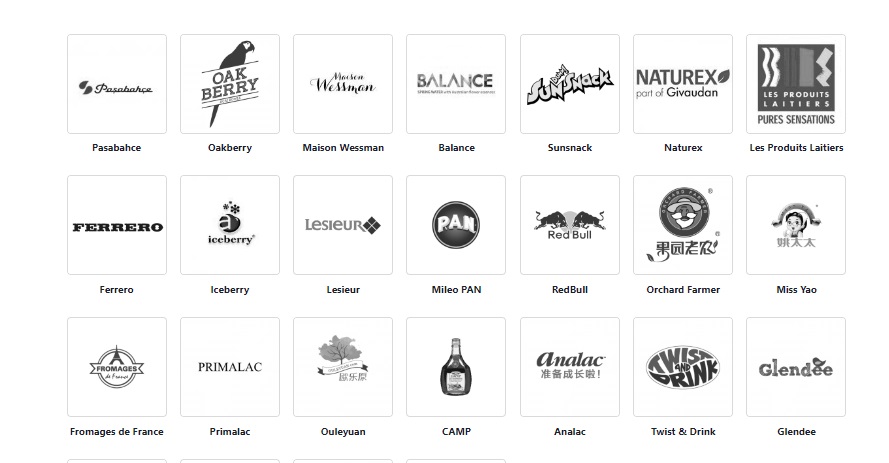
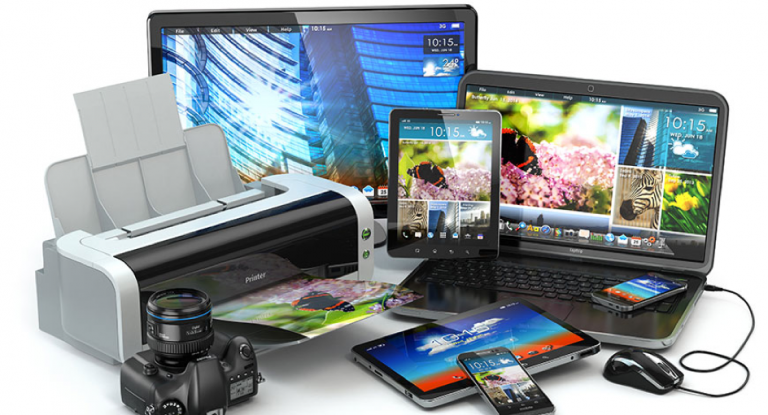
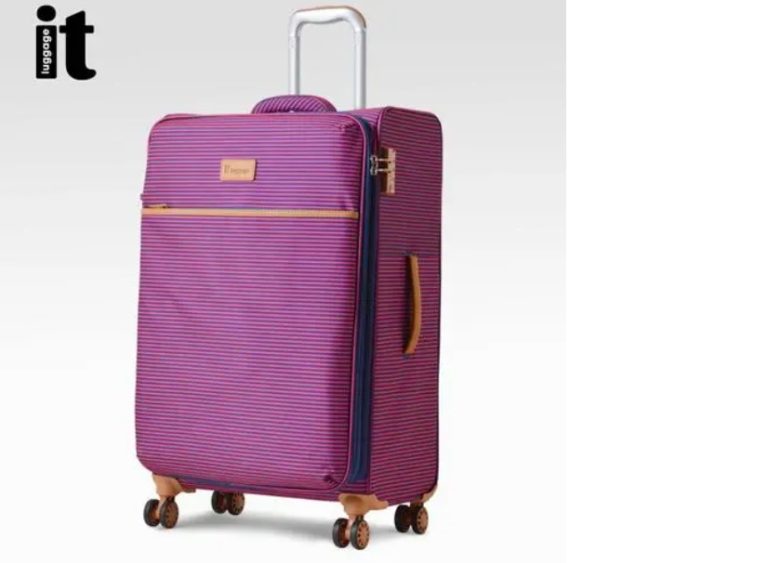


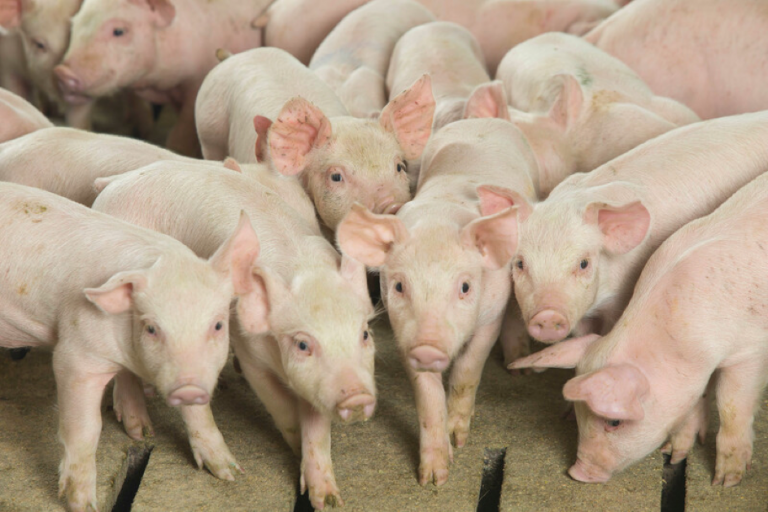
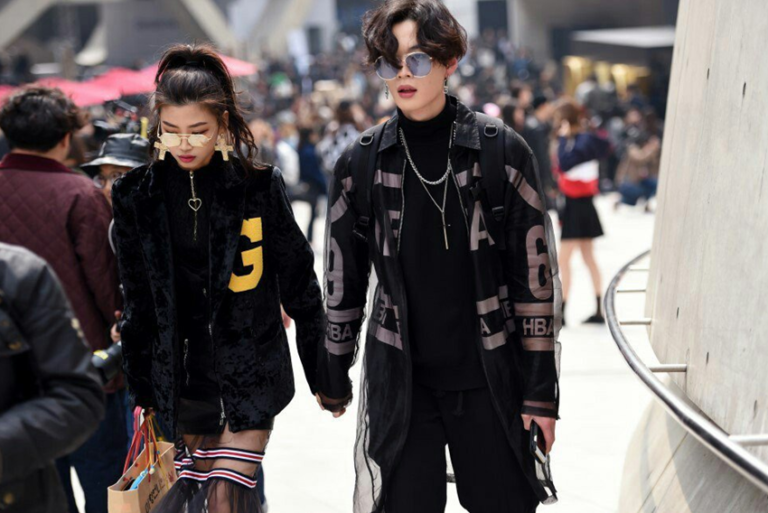
It’s fewer sugary sodas in China things are Chinese , as health conscious Chinese society opt for energy drinks, premium waters and so on.
Chinese Parents are gradually turning away from traditional soft drinks, as health awareness guides beverage choices for their kids and they are Right .
I am searching a good distributor for my brand in China, can you help me?
PM ME